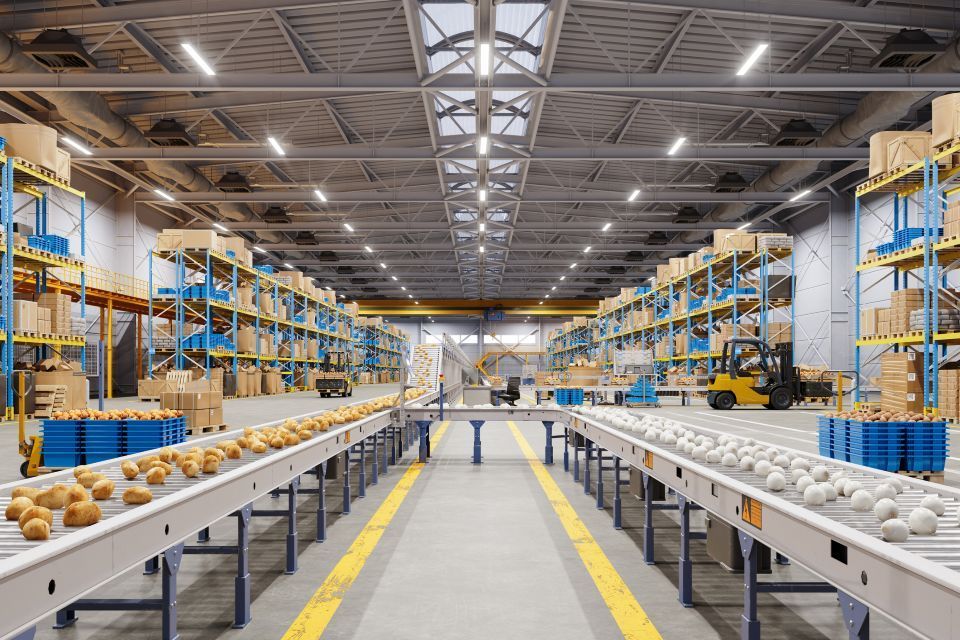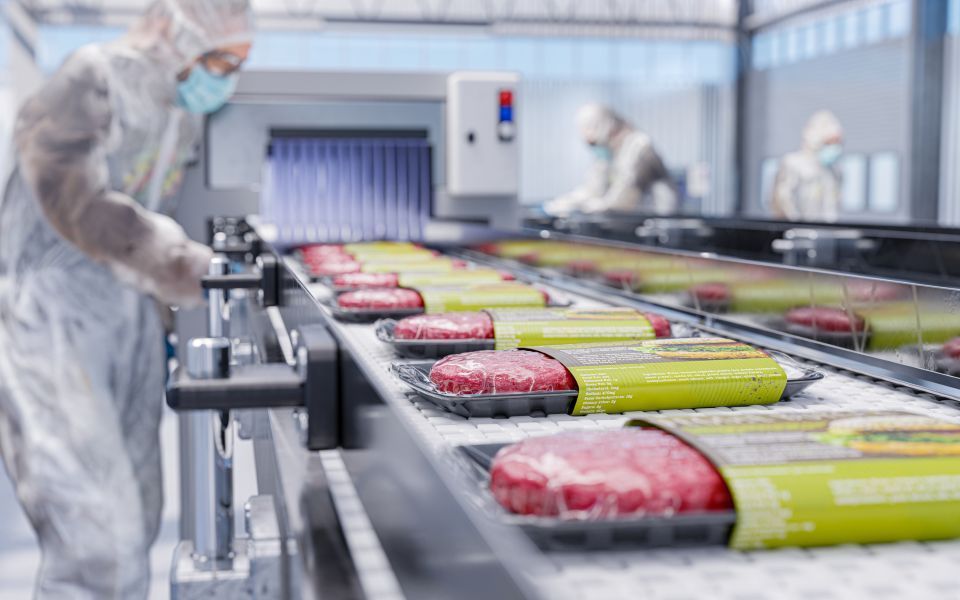Common Forklift Problems Seen in Food Processing Facilities
Forklifts play a big role in keeping food processing facilities in Melbourne moving. From transporting ingredients to shifting finished products between work areas, they’re relied on every day to keep production running smoothly. But unlike standard warehouse environments, food facilities come with their own challenges. Cold rooms, wet floors, strict hygiene standards and constant stop-start movements all place extra stress on equipment.
These conditions often lead to issues that operators and supervisors see time and time again. Understanding these common problems helps reduce downtime, improve safety and keep workflows on track. In this article, we’ll break down the most frequent forklift challenges found in food processing environments and what typically causes them.

1. Temperature-Related Forklift Issues
Food processing sites often involve constant movement between different temperature zones. Forklifts might go from a warm loading area straight into a chilled room or freezer, and that rapid change can create a range of problems.
Cold-Room and Freezer Environment Challenges
When a forklift operates in freezing conditions, parts simply don’t perform the same way they do at normal temperatures. Hydraulic oil can thicken, lift speeds can slow down, and batteries lose power much faster. Electric forklifts in particular struggle with reduced battery life, which means more frequent charging and shorter run times.
Condensation Problems
Another common issue is condensation. When a forklift moves from a cold space back into a warmer area, moisture forms on metal parts, sensors and electrical components. Over time, this can lead to corrosion, fogged-up sensors and reduced visibility for any onboard cameras. In some cases, moisture even causes sensitive electronics to malfunction.

2. Hygiene and Cleanliness Requirements
Food processing facilities have strict cleanliness standards, and forklifts need to operate in a way that supports those requirements. This environment creates a few challenges for forklifts.
Contamination Risks
Forklifts can easily pick up small bits of food, packaging or residue as they move around the facility. This debris can work its way into moving parts, causing stiffness or extra wear over time. On top of that, any lubricants used on the forklift must be food-safe, which limits options and sometimes affects how well components stay protected.
Frequent Washdowns
To keep equipment clean, forklifts often undergo regular washdowns. While necessary, all that water exposure can create its own set of issues. Metal components may start to rust, and electrical systems don’t always cope well with moisture. Even with protective covers, water can sometimes find its way into sensitive areas if seals or drainage points aren’t perfect.
All of these hygiene-related demands make it important for forklifts in food facilities to be maintained more carefully and inspected more often. Book Forklift inspection and maintenance.
3. Tyre Wear from Constant Stop-Start Movements
Forklifts in food processing facilities rarely get long, smooth runs. Instead, they’re constantly stopping, starting and turning in tight spaces. All of that movement puts a lot of pressure on the tyres, and it shows.
High-Traction Flooring
Many food processing sites use high-grip flooring to prevent slips and support hygiene standards. While it’s great for safety, it’s tough on forklift tyres. The extra friction creates more heat and speeds up wear, especially on solid tyres that are already working hard under heavy loads.
Wet or Slippery Floors
On the other hand, areas with water, spills or cleaning residue can cause the opposite problem. Tyres may slip or skid, reducing control and putting extra strain on the tread. When tyres have to constantly grip, release and re-grip to keep traction, they wear out faster than expected. Luckily, we offer high-quality
tyre replacement in Melbourne. Book a
forklift inspection with our mobile team today!
4. Sensor and Electronics Interference
Modern forklifts rely heavily on sensors, cameras and electronic systems to keep operators safe and productive. In food processing facilities, these components can face challenges that don’t exist in standard warehouse environments.
Moisture and Steam
Steam, mist and moisture are common in areas where cleaning, cooking or cooling takes place. When forklifts move through these spaces, moisture can collect on sensors or seep into small openings. This can cause sensors to misread their surroundings, camera lenses to fog up or electronic components to react unpredictably.
Metal Detectors and Automated Lines
Some food processing facilities use metal detectors, automated conveyor systems or other equipment that emits electromagnetic signals. These can interfere with nearby forklift electronics, causing momentary glitches or calibration issues. Even a small disruption can affect distance sensors, speed controls or warning systems.
Because forklifts rely so much on accurate readings, any interference in these environments can lead to reduced performance or unexpected behaviour. Regular cleaning, protective shielding and careful
maintenance help reduce the risk.
5. Visibility Issues in Busy Processing Lines
Food processing facilities are often fast-paced, crowded and full of moving parts. Between staff, equipment and production lines, operators don’t always have a clear view of what’s around them, and that creates a few common visibility challenges.
Steam, Dust and Product Particles
Areas with steam, fine powders or airborne food particles can make it harder for operators to see clearly. These conditions can also fog up camera lenses or cover sensors, reducing their accuracy. When visibility drops, even simple movements like reversing or turning become more difficult.
Tight, Congested Aisles
Many processing lines are built with narrow pathways to maximise space. Forklifts navigating these tight aisles need to make constant small adjustments, which puts extra strain on steering components. Operators also need to move slowly and carefully, which can slow down workflow during busy periods.
Together, these visibility issues increase the need for good lighting, clean equipment and clear communication between staff. Even small improvements can make a big difference in keeping operations safe and efficient.
6. Forklift Damage from Repetitive Short Runs
Unlike large warehouses where forklifts cover long distances, food processing facilities often involve quick, repetitive movements. Forklifts might shuttle small loads from one station to another, rarely getting the chance to run long enough to reach steady operating conditions.
Continuous Short Cycles
Short runs mean motors and engines don’t warm up properly. When equipment operates below its ideal temperature, parts experience more strain. Starters, motors and batteries work harder than they should, and this constant stop-start pattern can lead to early wear and reduced performance.
Frequent Lifting of Lightweight Loads
Even when the loads are small, lifting them repeatedly throughout the day puts stress on the mast, forks and hydraulic systems. These components are designed for varied cycles, so the constant repetition can cause gradual fatigue or inconsistent lift performance over time.
In busy food processing environments, these short, frequent movements are normal, but they do speed up general wear. Regular checks and gentle operation where possible can help reduce unnecessary strain on the equipment.
7. Corrosion and Chemical Exposure
Food processing facilities use a wide range of cleaning agents, sanitisers and sometimes even brine or salt-based products. While these are essential for hygiene, they can take a toll on forklift components.
Cleaning Agents and Sanitisers
Strong cleaning chemicals help keep the facility safe and compliant, but they’re often harsh on metal surfaces. Over time, these agents can wear down paint, damage seals and accelerate rust. Even stainless-steel components can start to show signs of corrosion if exposed regularly without proper protection.
Salt or Brine Exposure
In seafood, meat or certain packaged food operations, brine or salt can end up on floors or equipment. Salt is extremely corrosive and can damage forks, chains, hydraulic parts and even the chassis if not washed off quickly. Once corrosion sets in, it tends to spread and weaken structural components.
These conditions make it especially important for forklifts in food environments to be cleaned, dried and inspected carefully to prevent small issues from turning into major problems. Book your
forklift inspection and service with us!

8. Operator Fatigue in High-Pressure Environments
Food processing plants often run at a fast pace, with tight deadlines and repetitive tasks. Forklift operators spend long hours navigating busy zones, which can lead to physical and mental fatigue.
Repetitive Movements
Constant turning, lifting and manoeuvring in the same confined areas can tire operators quickly. Fatigue affects reaction times and accuracy, making small mistakes more likely. Over time, the strain can also lead to discomfort or injuries that impact a person’s ability to handle equipment safely.
High Noise and Stress
Many food processing sites are loud, with machinery running throughout the day. The combination of noise, time pressure and close interactions with production staff can make the environment mentally draining. When operators feel rushed or overwhelmed, their focus drops and equipment handling becomes less precise.
Addressing fatigue through rotation, breaks and clear workflows not only helps operators stay sharp but also reduces the chances of forklift-related issues throughout the shift.
Best Practices to Reduce Common Forklift Issues in Food Facilities
While food processing environments naturally put more pressure on forklifts, many of the common issues can be reduced with the right habits and routines. Small adjustments can make a noticeable difference to performance, reliability and overall safety.
Routine Checks for Moisture and Corrosion
Moisture, steam and chemical exposure are part of daily life in food facilities, so it helps to regularly inspect metal parts, electrical panels and hydraulic areas for early signs of corrosion. Catching problems early prevents small rust spots or damp patches from spreading.
Hygiene-Focused Cleaning Routines
Cleaning is essential, but it’s important to dry forklifts properly afterwards. Paying attention to drainage points, seals and areas around electrical components helps prevent long-term damage. Using food-safe lubricants consistently also reduces friction and protects moving parts.
Protecting Sensors and Electronics
A quick wipe-down of cameras, sensors and control panels at the start of a shift can prevent visibility issues. Covers or shields may also help reduce interference in areas with heavy steam or mist.
Visibility Improvements
Good lighting, clean mirrors and consistent communication between staff all support safer forklift operation. Even small improvements, like marking busy intersections, can reduce blind spots and help operators move confidently.
Tyre Pressure and Wear Monitoring
Checking tyre condition regularly helps spot wear before it affects traction or control. Since food facilities often have a mix of wet and high-grip surfaces, tyre maintenance plays a big role in smooth operations.
Operator Training for Food Environments
Training operators specifically for food processing conditions makes a difference. Understanding how flooring, temperature and hygiene routines affect handling helps operators adapt and reduce strain on the equipment.
If you’d like help choosing equipment that suits food-processing conditions or want practical guidance on improving forklift performance in your facility, our team is always here to assist. Reach out any time to chat with a specialist.
_________________
Heavy Lift Forklifts
Our showroom: 826 Mountain Hwy, Bayswater VIC
Call us on: (03) 9762 4965






